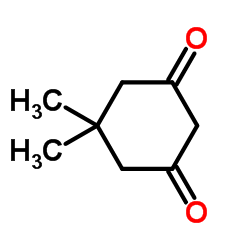The reversible formation of cysteine sulfenic acid promotes B-cell activation and proliferation.
Katie E Crump, Daniel G Juneau, Leslie B Poole, Karen M Haas, Jason M Grayson
文献索引:Eur. J. Immunol. 42(8) , 2152-64, (2012)
全文:HTML全文
摘要
B-cell receptor (BCR) ligation generates reactive oxygen intermediates (ROIs) that play a role in cellular responses. Although ROIs can oxidize all macromolecules, it was unclear which modifications control B-cell responses. In this study, we demonstrate the importance of the first oxidation product of cysteine, sulfenic acid, and its reversible formation in B-cell activation. Upon BCR crosslinking, B cells increase ROI levels with maximal production occurring within 15 min. Increased ROIs preceded elevated cysteine sulfenic acid, which localized to the cytoplasm and nucleus. Analysis of individual proteins revealed that the protein tyrosine phosphatases (PTPs) SHP-1, SHP-2, and PTEN, as well as actin, were modified to sulfenic acid following BCR ligation. Additionally, we used 5,5-dimethyl-1,3-cyclohexanedione (dimedone), a compound that covalently reacts with sulfenic acid to prevent its further oxidation or reduction, to determine the role of reversible cysteine sulfenic acid formation in regulating B-cell responses. Dimedone incubation resulted in a concentration-dependent block in anti-IgM-induced cell division, accompanied by a failure to induce capacitative calcium entry (CCE), and maintain tyrosine phosphorylation. These studies illustrate that reversible cysteine sulfenic acid formation is a mechanism by which B cells modulate pathways critical for activation and proliferation.© 2012 WILEY-VCH Verlag GmbH & Co. KGaA, Weinheim.
相关化合物
| 结构式 | 名称/CAS号 | 分子式 | 全部文献 |
|---|---|---|---|
 |
醛试剂
CAS:126-81-8 |
C8H12O2 |
|
[The role of aldehydes in development of oxidative stress un...
[Fiziol. Zh. 59(1) , 25-31, (2013)] |
|
Thiol-blocking electrophiles interfere with labeling and det...
2013-12-01 [FEBS J. 280(23) , 6150-61, (2013)] |
|
Open season for hunting and trapping post-translational cyst...
2011-04-11 [ChemBioChem. 12(6) , 841-4, (2011)] |
|
"Danger" conditions increase sulfamethoxazole-protein adduct...
2009-11-01 [J. Pharmacol. Exp. Ther. 331(2) , 372-81, (2009)] |
|
Formation and reactions of sulfenic acid in human serum albu...
2010-01-01 [Meth. Enzymol. 473 , 117-36, (2010)] |